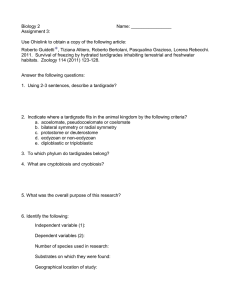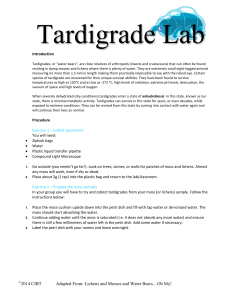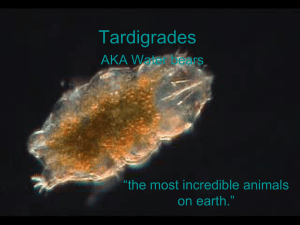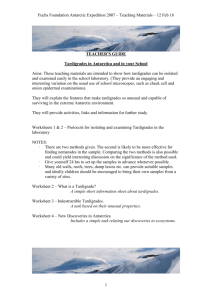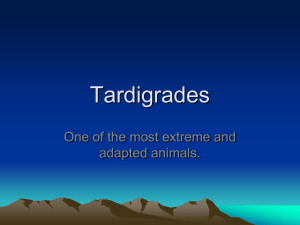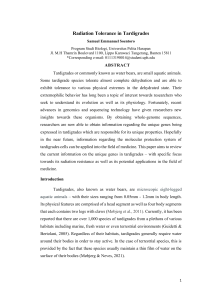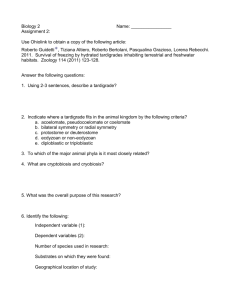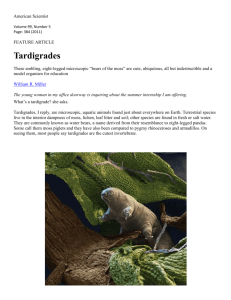“Water Bears" Survive Earth Orbit
advertisement
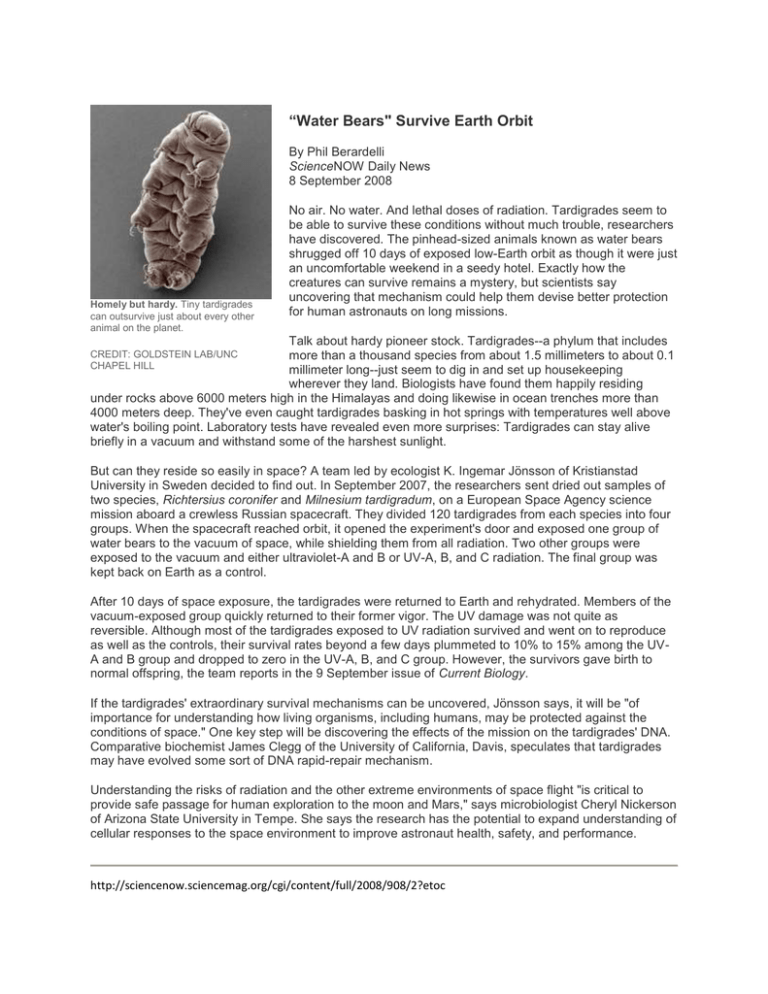
“Water Bears" Survive Earth Orbit By Phil Berardelli ScienceNOW Daily News 8 September 2008 Homely but hardy. Tiny tardigrades can outsurvive just about every other animal on the planet. No air. No water. And lethal doses of radiation. Tardigrades seem to be able to survive these conditions without much trouble, researchers have discovered. The pinhead-sized animals known as water bears shrugged off 10 days of exposed low-Earth orbit as though it were just an uncomfortable weekend in a seedy hotel. Exactly how the creatures can survive remains a mystery, but scientists say uncovering that mechanism could help them devise better protection for human astronauts on long missions. Talk about hardy pioneer stock. Tardigrades--a phylum that includes more than a thousand species from about 1.5 millimeters to about 0.1 millimeter long--just seem to dig in and set up housekeeping wherever they land. Biologists have found them happily residing under rocks above 6000 meters high in the Himalayas and doing likewise in ocean trenches more than 4000 meters deep. They've even caught tardigrades basking in hot springs with temperatures well above water's boiling point. Laboratory tests have revealed even more surprises: Tardigrades can stay alive briefly in a vacuum and withstand some of the harshest sunlight. CREDIT: GOLDSTEIN LAB/UNC CHAPEL HILL But can they reside so easily in space? A team led by ecologist K. Ingemar Jönsson of Kristianstad University in Sweden decided to find out. In September 2007, the researchers sent dried out samples of two species, Richtersius coronifer and Milnesium tardigradum, on a European Space Agency science mission aboard a crewless Russian spacecraft. They divided 120 tardigrades from each species into four groups. When the spacecraft reached orbit, it opened the experiment's door and exposed one group of water bears to the vacuum of space, while shielding them from all radiation. Two other groups were exposed to the vacuum and either ultraviolet-A and B or UV-A, B, and C radiation. The final group was kept back on Earth as a control. After 10 days of space exposure, the tardigrades were returned to Earth and rehydrated. Members of the vacuum-exposed group quickly returned to their former vigor. The UV damage was not quite as reversible. Although most of the tardigrades exposed to UV radiation survived and went on to reproduce as well as the controls, their survival rates beyond a few days plummeted to 10% to 15% among the UVA and B group and dropped to zero in the UV-A, B, and C group. However, the survivors gave birth to normal offspring, the team reports in the 9 September issue of Current Biology. If the tardigrades' extraordinary survival mechanisms can be uncovered, Jönsson says, it will be "of importance for understanding how living organisms, including humans, may be protected against the conditions of space." One key step will be discovering the effects of the mission on the tardigrades' DNA. Comparative biochemist James Clegg of the University of California, Davis, speculates that tardigrades may have evolved some sort of DNA rapid-repair mechanism. Understanding the risks of radiation and the other extreme environments of space flight "is critical to provide safe passage for human exploration to the moon and Mars," says microbiologist Cheryl Nickerson of Arizona State University in Tempe. She says the research has the potential to expand understanding of cellular responses to the space environment to improve astronaut health, safety, and performance. http://sciencenow.sciencemag.org/cgi/content/full/2008/908/2?etoc

